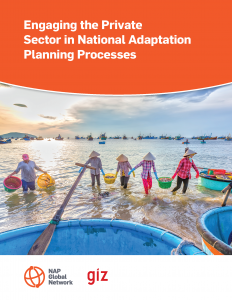Although governments remain the overall owners and drivers of the NAP process, adapting to the impacts of climate change is not the responsibility of national governments alone. It requires the coordinated input of multiple stakeholders, including local authorities, development partners, communities and civil society. In order for NAPs to be successfully implemented and climate resilience strengthened, private sector actors will also need to be involved.
To engage the private sector early and across all phases of the NAP process, governments should establish and maintain four key enabling factors: capacity development; financing; institutional arrangements; and information sharing.
Read our guidance note on engaging the private sector in NAP processes to learn more.
Read our five-part blog series on private sector engagement in NAP processes
- What is the Business Case for Private Investment in the NAP Process?
- Knowledge is Power: Why information sharing is key to engaging businesses in the NAP process
- Paying for it: How governments can help the private sector overcome financial barriers to investing in adaptation
- For MSME Day, We Look at How Institutional Arrangements Can Engage Small Businesses in Climate Adaptation
- When Life Gives You Lemons: How to Bolster Businesses’ Capacity for Making Lemonade Out of a Changing Climate



